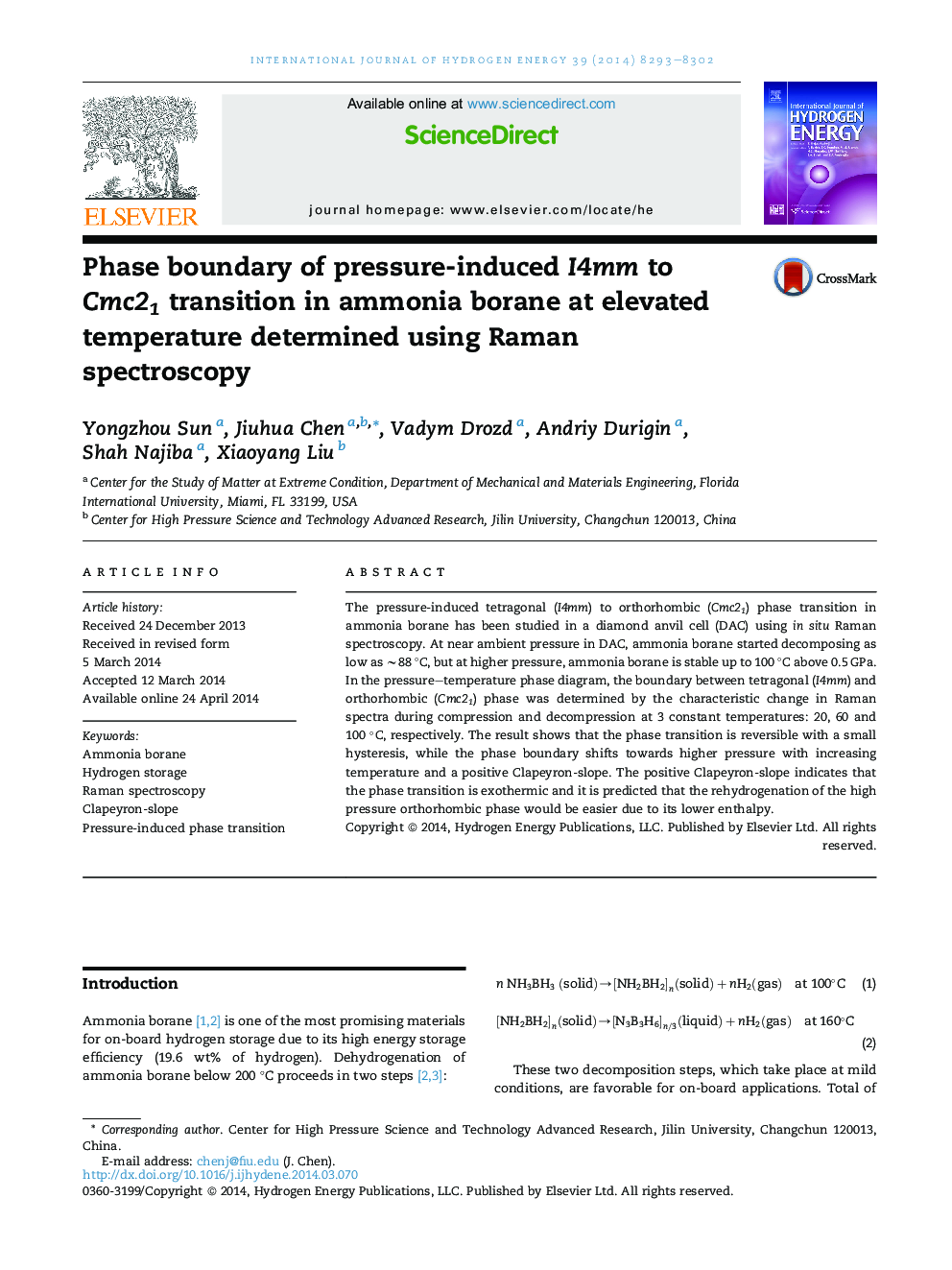| Article ID | Journal | Published Year | Pages | File Type |
|---|---|---|---|---|
| 7719244 | International Journal of Hydrogen Energy | 2014 | 10 Pages |
Abstract
The pressure-induced tetragonal (I4mm) to orthorhombic (Cmc21) phase transition in ammonia borane has been studied in a diamond anvil cell (DAC) using in situ Raman spectroscopy. At near ambient pressure in DAC, ammonia borane started decomposing as low as â¼88 °C, but at higher pressure, ammonia borane is stable up to 100 °C above 0.5 GPa. In the pressure-temperature phase diagram, the boundary between tetragonal (I4mm) and orthorhombic (Cmc21) phase was determined by the characteristic change in Raman spectra during compression and decompression at 3 constant temperatures: 20, 60 and 100 °C, respectively. The result shows that the phase transition is reversible with a small hysteresis, while the phase boundary shifts towards higher pressure with increasing temperature and a positive Clapeyron-slope. The positive Clapeyron-slope indicates that the phase transition is exothermic and it is predicted that the rehydrogenation of the high pressure orthorhombic phase would be easier due to its lower enthalpy.
Related Topics
Physical Sciences and Engineering
Chemistry
Electrochemistry
Authors
Yongzhou Sun, Jiuhua Chen, Vadym Drozd, Andriy Durigin, Shah Najiba, Xiaoyang Liu,
